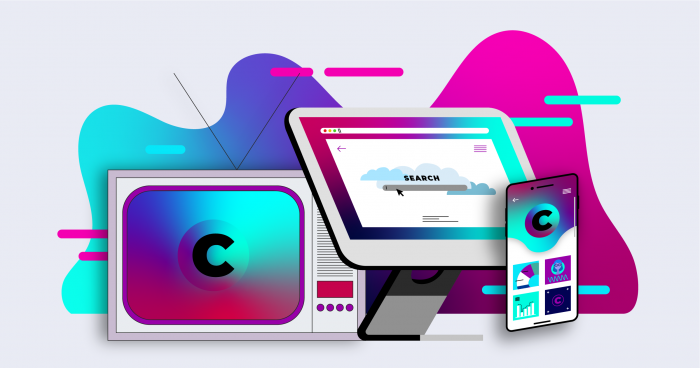No other organization relies on meetings like Alcoholics Anonymous does—the program is literally built upon in-person meetings. Well, those can’t happen right now. But at this moment, millions of people need AA and NA more than ever. How does a life-saving organization that depends on intimate, anonymous, secure in-person meetups continue to serve its membership? And what can you learn from how they’ve made the transition for in person to remote?
Since the middle of March, when schools and nonessential businesses began to shutter to stall the spread of Covid-19, support groups for those in addiction recovery have been trying to find ways to continue to keep their members active and engaged.
The Zoom revolution came to AA early. The organization was among the first to mobilize online, replacing their in-person meetings with digital alternatives. For all intents and purposes, the transition has been a success. New York Intergroup, AA’s regional office for the state, says that it now hosts over 2,500 video meetings a week.
But AA’s adoption of video conferencing hasn’t been seamless. The word “anonymous” is in the AA’s name for a reason, and so security and privacy are paramount. Some meetings have run into technological hiccups—namely, infamous instances of “Zoom-bombing” that risk the group’s anonymity. Some groups are reporting a loss of membership that reflects the difficulties of trying to replicate the intimate in-person experience in a video conference. But on the whole, there’s a lot to learn. Here’s what AA’s digital revolution, hiccups and all, can teach marketers.
AA was designed to be flexible
AA managed to make the leap to digital so adroitly because of the way the organization is structured. Each individual support group operates autonomously, and is therefore self-supporting. As a result, when shelter-in-place mandates went into effect, individual groups had the permission—and, in many cases, the discretionary funds—to act to support themselves.
Zoom became the platform of choice not because it was company policy—it would take NY Intergroup a few weeks to replace all meetings with AA-operated Zoom rooms. But because it’s so widely used in the business world, AA members were already familiar with the platform. In many cases, that familiarity made Zoom the easiest choice, and the easiest to teach to others.
Key Takeaway:
The entire organization was able to make the shift to a digital meeting model because the change happened from the ground up, with each group testing the system that worked best for them, and then spreading their findings by word of mouth.
Trust the program
It turns out that when it comes to recovery, a digital meeting is a pretty solid stand-in for an in-person experience. While the physical intimacy of the in-person experience might be lacking, the emotional intimacy stays pretty much the same. That’s what really matters to recovery, as one AA member explained, because “the healing is in the sharing.” And the sharing really can happen just as easily from your living room as it can in a church basement.
There are just about as many styles of program meetings as there are groups. But what makes for a good AA meeting? The stories. A support group is only as powerful as those speaking, and, luckily for AA members, Zoom doesn’t limit the potency of a compelling story or speaker.
Key Takeaway:
What you say matters more than where you say it. With some additional care, the online experience can be as conducive to forming emotional connections as the in-person experience.
Use remote features to your advantage
There are even some ways that Zoom improves the AA experience compared to the in-person experience. As an example, that NA member explained how Zoom’s muting function was particularly well-aligned with his group’s “no crosstalk” policy. While that might be a frustrating feature for certain business conversations, it may be a huge asset in others. It suits AA’s highly-structured meetings and is tailor-made for exactly the kind of individual testimonials that make for some of the best meetings. “You’re given the floor, you say your piece,” he explained.
“The way that Zoom is set up translates very well to an overwhelming majority of meetings that I’ve been to,” said one NA member. That NA group did have to make a few small adjustments to its meeting format in order to streamline the experience with Zoom. Here are some of the changes they recommend:
- They have two or more hosts. One of the hosts is the chair of the meeting, and one is a Zoom host, who’s there to solve any technical difficulties.
- They use the hand-raising function on Zoom to bring order to the speaking process, deciding who gets to share with the group and when.
- Use the chat box for any miscellaneous orders of business that don’t require someone to speak.
Key Takeaway:
Virtual meeting platforms may have features that can be used to your group’s advantage.
The difficulties of onboarding
As one AA member put it, “It’s the same old AA, but it’s in a new package.” But that doesn’t mean that everyone’s behind the new message. The way that AA normally works is like a perfect marketing funnel. In-person meetings are designed to turn first-timers into repeat visitors and eventually members. Once somebody shows, there are myriad ways of making sure they don’t slip through the cracks—from being greeted at the front door, to being invited to share their story, to getting hooked up with a sponsor.
That connectivity is more difficult to create in the digital realm, but really only when it comes to security disruptions. During the initial Zoom migration, meetings across the country were “bombed,” disrupted by trolls who taunted meeting participants with lewd comments and slurs.
This kind of disruption can cause a lot of harm to people in sensitive states, especially those who are newly sober. “There was a woman that called me from the street,” said one AA member. “She was in a Zoom-bombed meeting and she just felt like she needed to run away.”
Here are some of the security guidelines that NY Intergroup encourages groups to follow in order to better protect the security and anonymity of its members:
- Each room is password protected. In order to access it, you have to contact NY Intergroup directly. While some worry that this extra hurdle might keep the casual newcomer from dropping by a meeting, the additional security makes it necessary.
- NY Intergroup has put policies in place for meeting disruptions, including step-by-step instructions for kicking the disruptor out. Some meetings appoint designated “door guy” who can kick out suspected trolls.
- Everyone is encouraged to leave their name blank, their camera off, or change their background, depending on their level of comfort.
One AA member explained that her home group took matters a step further and used the Waiting Room function, so that they could personally screen each new member as they joined. But the Waiting Room, while effective, also made group members nervous. AA meetings should be open to anyone. “I don’t think it’s a good practice,” said the AA member. “We don’t do it too much anymore.”
Key Takeaway:
A strong funnel is a strong funnel, no matter the platform. The way to make your customers trust you is to show them that you’re taking their safety and security seriously.
Passing the virtual basket
As with its membership, AA’s fundraising is voluntary—almost to the point of being passive. The way money is traditionally collected from its members is with a basket that’s casually passed around its in-person meetings. The suggested contribution is a dollar. It may not sound like a lot, but if your group is around 90 people, and you meet more than once a week—you could easily build up a reserve of several hundred dollars, and kick back a sizable check up the chain to cover AA’s costs.
But how does AA fundraise in digital meetings? How does AA encourage people at a distance to put aside a dollar at a time? Each group has found its own way of grappling with this problem. Some individuals are sending checks to NY Intergroup, others have started Venmo accounts, either going to individual treasurers or to previously established group bank accounts.
Others are taking a more old-fashioned approach. “Every meeting every week, I just put $2 in an envelope,” said one AA member. “And when we come back together in person, I’ll give that envelope to the treasury.”
Key Takeaway:
However you decide to collect money, make it simple and make it transparent. A virtual passing of the hat will be so much more effective if there’s one designated method and one designated time during the meeting when everyone contributes.
Supporting every type of customer
When NY Intergroup moved all its meetings to video conferences, it opened up the phone lines for additional customer support. One AA member explained that this service was for “the old timer who’s been in AA for years, but who just won’t go online.”
“They say ‘that’s not AA,’” said the AA member. “But so-and-so doesn’t want to admit they don’t know how to do it.”
Key Takeaway:
If you have an older clientele making a digital transition, put time and effort into customer service.
Why digital meetings are here to stay
While it’s true that support groups will always need to have in-person meetings in order to thrive, many members hope these inclusive and flexible digital meetings will continue on after the pandemic. For parents of small children and people with demanding jobs, it’s never been easier to find time to go to a meeting. And, as a result, the meetings have been getting bigger, and the audiences more diverse and international.
These positive developments and growth of the program wouldn’t have been possible without this digital shift. How exactly AA groups will continue to hold remote meetings is unclear—but given that AA’s Online Intergroup has a new website that they’re beta-testing, it seems likely the format will continue to be important to the 12-step program into the future.



